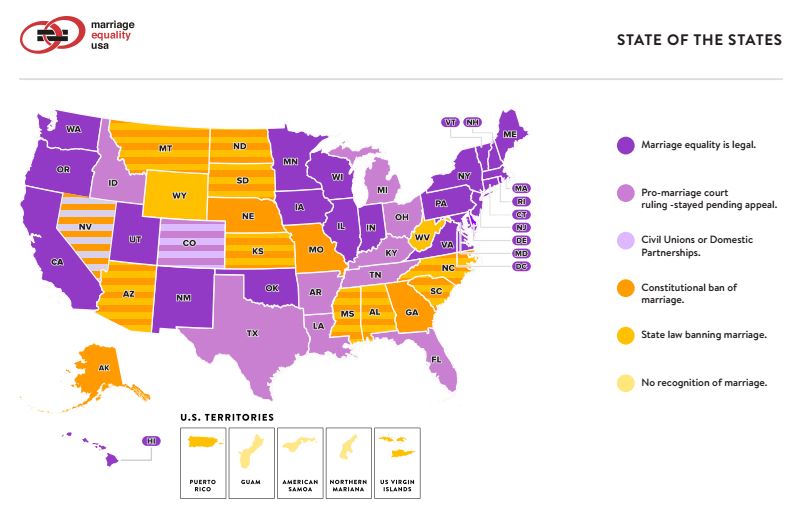UPDATE: Below is a new updated marriage equality map from Marriage Equality USA showing the overall “State of the States” reflecting today’s Supreme Court’s decision.
The US Supreme Court announced that it will not be hearing any of the seven same sex marriage cases that would have produced a nationwide ruling on the issue. With the court decision to not hear the cases, same sex couples will be able to marry in potentially 11 new states in the next few months.
What makes this Supreme Court decision unusual is the fact that both sides, same sex marriage advocates and so called “traditional” marriage advocates, wanted the Supreme Court to hear one of the cases. Under typical circumstances, same sex marriage advocates would have traditionally just requested that the Federal appelate court rulings stand because the rulings all overturned same sex marriage bans. Since both sides requested that the Supreme Court rule on the issue. the court did not need to make any statement concerning the lower Federal appelate court rulings. The Supreme Court simply said they would not hear the cases letting the Federal appelate court rulings stand.
The decision now paves the way for marriage to begin in in Utah, Oklahoma, Virginia, Wisconsin and Indiana where the seven cases the court was asked to hear originated. Six other states — Colorado, Wyoming, Kansas, West Virginia, North Carolina and South Carolina — will likely follow suit because each falls under the jurisdiction of one of the appelate courts.
Same sex marriage will reach the critical majority in the United States; with the potential addition of 11 new states, thirty states will soon have marriage equality. There are other pending cases in two other Federal appeals courts in San Francisco and Cincinnati which will likely expand marrige equality yet again.












